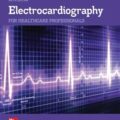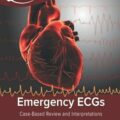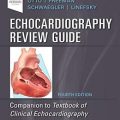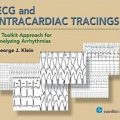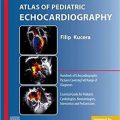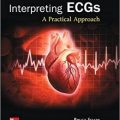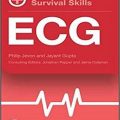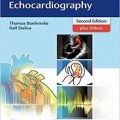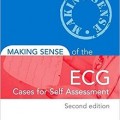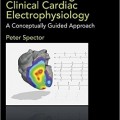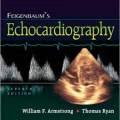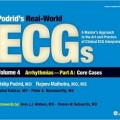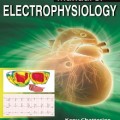دانلود کتاب الکتروفیزیولوژی مداخله ای قلب: یک رویکرد چندگانه
Interventional Cardiac Electrophysiology: A Multidisciplinary Approach, 1ed
Interventional Cardiac Electrophysiology is the first and only comprehensive, state-of-the-art textbook written for practitioners in multiple specialties involved in the care of the arrhythmia patient.
Encompassing the entire field of interventional therapy for cardiac rhythm management, from basic science to evidence-based medicine to future directions, topics include:
- Technology and Therapeutic Techniques – EP techniques; imaging and radiologic technology; device and ablation technology; drug therapy.
- Interventional Electrophysiologic Procedures – Diagnostic and physiologic EP techniques; mapping in percutaneous catheter and surgical EP procedures; catheter and surgical ablation; device implantation and management.
- Clinical Indications and Evidence-based Outcomes Standards – For medical and surgical EP interventions for arrhythmias.
- New Directions in Interventional Electrophysiology – Hybrid therapy for atrial and ventricular arrhythmias and staged therapy.
This book will be essential reading for clinicians and researchers that form the health care team for arrhythmia patients: cardiologists, adult and pediatric clinical electrophysiologists, interventional electrophysiologists, cardiac surgeons practicing arrhythmia surgery, allied health care professionals, pharmacologists, radiologists and anesthesiologists evaluating arrhythmia patients, and basic scientists from the biomedical engineering and experimental physiology disciplines.
About the Author
Sanjeev Saksena, MD, FHRS, FACC, FESC, FAHA Clinical Professor of Medicine, UMDNJ-RWJ Medical School; Medical Director, Electrophysiology Research Foundation; Editor-in-Chief, Journal of Interventional Cardiac Electrophysiology
Ralph J. Damiano, Jr., MD, John M. Shoenberg Professor of Surgery, Washington University School of Medicine; Chief of Cardiac Surgery, Barnes-Jewish Hospital, St. Louis, Missouri
N. A. Mark Estes III, MD, Professor of Medicine, Tufts University School of Medicine; Director, New England Cardiac Arrhythmia Center, Tufts Medical Center, Boston
Francis E. Marchlinski, MD, Director, Electrophysiology Program, University of Pennsylvania Health System; Professor of Medicine, Division of Cardiovascular Medicine, Hospital of the University of Pennsylvania, Philadelphia
Contents
Chapter 1: Fundamental Aspects of Electrophysiology Procedures.
Chapter 2: Electrocardiography for the Invasive Electrophysiologist.
Chapter 3: Complex Catheter Recording and Mapping Techniques in the EP Lab.
Chapter 4: Advances in Electroanatomic Mapping Systems.
Chapter 5: Intraoperative Mapping for the Surgeon and Electrophysiologist.
Chapter 6: Special Considerations for Pediatric Electrophysiological Procedures.
Chapter 7: Fundamentals and Applications of Echocardiographic Methods and Systems in the Electrophysiology Laboratory.
Chapter 8: The Role of 3D Transthoracic and Transesophageal Echocardiography in Interventional Electrophysiology.
Chapter 9: Intracardiac Echocardiography.
Chapter 10: Radiological Principles of Cardiac Computed Tomography, Magnetic Resonance Imaging, and Fusion Imaging.
Chapter 11: Cardiac Computed Tomography and Magnetic Resonance Image Interpretation During Interventional Procedures.
Chapter 12: Hybrid Operating Rooms. Joseph Yammine, Gregory F.
Chapter 13: New Developments in Lead and Introducer Systems.
Chapter 14: New Innovations in Implantable Pulse Generators and Heart Failure Devices.
Chapter 15: Implantable and Remote Monitoring.
Chapter 16: Percutaneous Left Atrial Appendage Occlusion.
Chapter 17: Principles and Techniques for Lead Extraction and Device System Revision for the Surgeon and Interventionalist.
Chapter 18: Anatomy and Histopathology of Ablation Interventions.
Chapter 19: Physical and Experimental Aspects of Radiofrequency Energy, Generators and Energy Delivery Systems.
Chapter 20: Cryothermal Ablation Technology and Catheter Delivery Systems.
Chapter 21: Laser, Ultrasound, and Microwave Ablation.
Chapter 22: Ablation Technology for the Surgical Treatment of Atrial Fibrillation.
Chapter 23: Remote Navigation in Catheter Procedures.
Chapter 24: How to Perform Drug Testing and Use Antiarrhythmic Drugs in Clinical Electrophysiology.
Chapter 25: Clinical Pharmacology of Anesthetic Agents and Their Application in Cardiac Electrophysiologic Procedures.
Chapter 26: Sinus Node and AV Conduction System.
Chapter 27: Paroxysmal Supraventricular Tachycardias.
Chapter 28: Atrial Tachycardia and Atrial Flutter.
Chapter 29: Atrial Fibrillation: Clinical Electrophysiologic Evaluation.
Chapter 30: Ventricular Tachycardia with Heart Disease.
Chapter 31: Idiopathic Ventricular Arrhythmias.
Chapter 32: Polymorphic Ventricular Tachycardia and Ventricular Fibrillation:Mapping in Percutaneous Catheter and Surgical EP Procedures.
Chapter 33: Mapping of Arrhythmias During Pediatric Electrophysiology Procedures.
Chapter 34: Intraoperative Mapping During Surgical Ablation Procedures.
Chapter 35: Anesthesia and Airway Management for Ablation.
Chapter 36: High-Frequency Jet Ventilation in Electrophysiology.
Chapter 37: Anesthesia for Electrophysiological Surgery and Procedures:Quality, Safety, and Outcomes.
Chapter 38: Atrioventricular Junction Ablation.
Chapter 39: Sinus Node and Ablation and Atrioventricular Node Reentry Ablation.
Chapter 40: Catheter Ablation of Accessory AV Pathways (Wolff–Parkinson–White Syndrome and Variants).
Chapter 41: Atrial Flutter: Right Atrial and Left Atrial Flutter.
Chapter 42: Atrial Fibrillation
Chapter 43: Ventricular Tachycardia in the Apparently Normal Heart: Optimizing Safety and Results with Ablative Therapy
Chapter 44: Ventricular Tachycardia with Ischemic and Nonischemic Heart Disease.
Chapter 45: Epicardial Ablation.
Chapter 46: Ventricular Fibrillation.
Chapter 47: Complications of Catheter Ablation and Their Management.
Chapter 48: Ventricular Tachycardia with Hybrid Endocardial and Epicardial Approaches.
Chapter 49: Surgical Ablation for Atrial Fibrillation: Current Procedures and Clinical Outcomes
Chapter 50: Surgical Ablation of Inappropriate Sinus Tachycardia.
Chapter 51: Complications of Surgical Ablation.
Chapter 52: Implantation Techniques for Permanent Pacemakers and Single- and Dual-Chamber Implantable Cardioverter-defibrillator Devices
Chapter 53: Surgical Considerations in Device Implantation.
Chapter 54: Ventricular and Atrial Resynchronization Devices: Technology and Implantation Methods.
Chapter 55: Organizing Best Practices in the Device Clinic.
Chapter 56: Postoperative Management and Follow-up of Cardiac Rhythm Management Devices.
Chapter 57: Optimization of Cardiac Resynchronization Therapy: Techniques and Patient Selection
Chapter 58: Radiologic Aspects of Cardiovascular Implantable Electronic Devices.
Chapter 59: Device-based Monitoring for Arrhythmias.
Chapter 60: Indications and Outcomes of Lead Extraction and Replacement Procedures for Pacemaker and Defibrillator Systems.
Chapter 61: Catheter Ablation of AV Junction and Paroxysmal SVT.
Chapter 62: Catheter Ablation of Atrial Flutter and Fibrillation.
Chapter 63: Ventricular Tachycardia and Ventricular Fibrillation.
Chapter 64: Permanent Pacing: Clinical Indications and Evidence-based Outcomes Standards in Interventional Electrophysiology.
Chapter 65: Clinical Indications and Evidence-based Outcomes Standards in Interventional Electrophysiology: Implantable Cardioverter-defibrillator Therapy.
Chapter 66: Indications for Surgical Ablation of Tachyarrhythmias
Chapter 67: Hybrid Device, Ablation, and Drug Therapy in Atrial Fibrillation.
Chapter 68: Staged Therapy Approaches in Atrial Fibrillation.
Chapter 69: Hybrid Device, Ablation, and Drug Therapy in Ventricular Tachyarrhythmias.
لینک کوتاه : https://bookbaz.ir/?p=33730
نویسنده : Sanjeev Saksena , Francis E. Marchlinski
ناشر : Cardiotext Publishing; 1 edition
سال انتشار : 2015
زبان کتاب : انگلیسی
نوع فایل : PDF
تعداد صفحات : 1040
(ISBN) شابک : 0979016487
قیمت کتاب درآمازون : $299.00
حجم فایل : 34 MB




